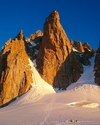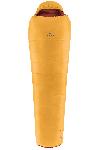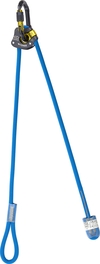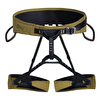The art of resoling a climbing shoe
How to resole a climbing shoe, a walking boot or mountaineering boot.
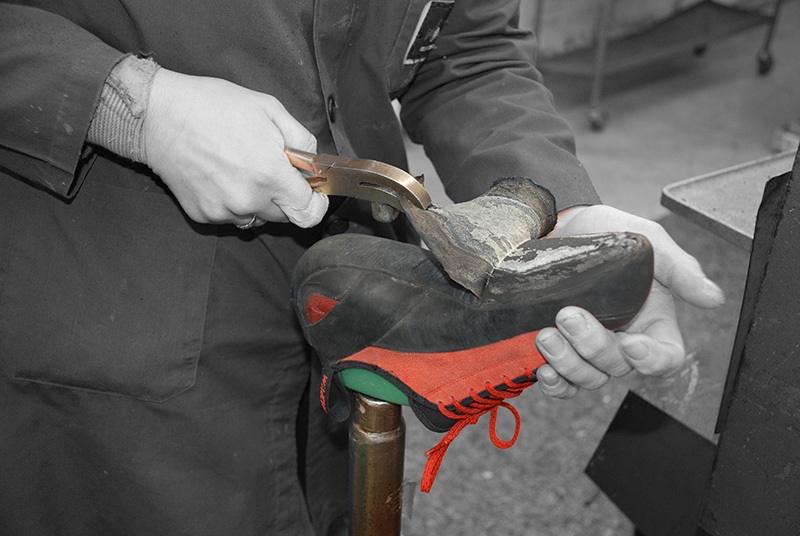
 1 / 12
1 / 12
With the help of pliers (and skillful hands) the old sole is pulled off.
 Il Risuolatore
Il Risuolatore
ARS ET LABOR
If climbing is the art of movement and balance, resoling a climbing shoe can be considered akin to a form of art. Resoling a climbing shoe still largely requires expert craftsmanship and is therefore not something for everyone. The procedure requires skill, manual dexterity, an ability to interpret the shoe and understand the needs of the wearer. Furthermore it also requires equipment that – yes, let's say it – can be rather expensive. A state-of-the-art resoler must possess lasts of all models and all sizes. This alone requires an investment of tens of thousands of euros...
Resoling a shoe also requires considerable time: resoling a shoe in a single day won't result in a good resole. And knowing about the various types of rubber, having a grinding wheel, some die cutters and glue doesn't suffice. Let's find out why.
WHAT IS A RESOLE?
Over time climbing shoes become worn out and transform. Just like climbers themselves, not all shoes and not all soles wear out in the same manner. For example, it is common knowledge that a leather upper “gives” more than a microfibre upper and this obviously affects the shoe's fit. Have you ever asked yourself how this affects the shoe's overall wear and tear?
Resoling a climbing shoe is primarily about substituting the old sole because this is worn out, usually in the toe area.

The entire resoling process is carried out with the climbing shoe mounted in its last. The last is the indispensable three-dimensional “cast” of the shoe (the same one used when the shoe is constructed) and is needed to keep the shoe's form coherent throughout the various resoling stages.
Using the wrong last will irreversibly deform the shoe and this is why a good cobbler must have all lasts of all climbing shoes, all sizes including half sizes. What happens if the cobbler doesn't possess the right last? Just imagine putting a straight last into an asymmetric shoe and leaving it there for a long time.
To remove the old sole you need ovens that melt the glue. The shoe is “cooked” for a while and then with the help of pliers (and skillful hands) the old sole is pulled off.

At this point the climbing shoe looks something like this.

The shoe now needs to be cleaned and all traces of the previous sole need to be removed. In order to do so the shoe needs buffing - sanding - with a specific machine. The next stage, treating the shoe's remaining rubber and its new sole, is important but not everyone does this (actually, hardly anyone does). This stage removes all impurities and therefore improves bonding. The chemicals used in the best laboratories should obviously not harm the environment and require careful storage and disposal.
The shoe now needs to rest and dry: it's almost ready for the new sole.
The new sole, cut perfectly to size, is fixed with at least two loads of glue that are applied with at least a one hour break between one hand and the next.

The glue needs to be "activated" in ovens at 80° (the process is similar to the one done previously to remove the sole) and this heat treatment guarantees a perfect bond between the shoe and the sole.

Once the sole has been glued on the shoe is placed into a hydraulic press at two fuse cycles, 6 and 13 atmospheres. Any less pressure and the resoling isn't state-of-the-art!


The shoe now needs to cool and rest to settle down. At least eight hours rest ensure better quality.
The cobbler must now buff the shoe, add the finishing touches and clean it. If necessary, the toe box or the midsole are improved on further.

And hey presto! Here's the end result!

WHY BOTHER RESOLING A CLIMBING SHOE?
It's worth resoling a climbing shoes be because it's up to 80% cheaper than buying a new pair. Furthermore, you use the same shoe you're already used to climbing with, except that it's been given a new life. There's no need therefore to break in the shoe so that it adapts to your foot: it's already taken the shape of your foot!
In addition, resoling enables you to customise your shoe. There are numerous different rubber types on offer and by resoling you can use the sole you want on the shoe you want.
FULL OR HALF SOLE?

90% of resoling is carried out using half-soles. The toe area wears out far more than the heel and that's why in most cases a full resole isn't necessary. Having said that, sometimes a heel replacement is needed and in this case the entire new sole is cut from the sheet of rubber. A full-sole requires far more care and attention as the amount of tension applied to the entire shoe can greatly affect its overall shape. Note that all rubber soles obviously act like a rubber band.
WHAT TYPE OF RUBBER?
A million dollar question. With no definitive answer...
Numerous climbers choose their specific rubber type and the criteria they base their decision on vary and are often conflicting: cost, durability, softness etc. Above all though the feeling the rubber gives is important. Take care though, the most famous types are not necessarily the best and don't necessarily offer the best performance. If put to the test, not many climbers can really distinguish one rubber type from the other... It's because of this that the most common thing to do is to resole a shoe using its original rubber type..
RESOLING WALKING BOOTS
The general principles apply to resoling a hiking boot. While the economic advantages are much the same, there are generally fewer options in the actual resoling process as not all replacement soles work well for all boots.
In general, the soles in the trekking industry can be split into two large groups: cupsole and flat. In the latter case a wedge is needed at the base of the boot, that EVO or micro-porous layer that can be seen on the heel of a classic mountaineering boot.
The art of resoling allows for interesting things to be done with trekking boots, too. For example, cupsoles with in-built wedges can substitute the entire lower structure and therefore give even the worst shoes a completely new life!
Microporous wedges are stiffer than those incorporated in the sole (typically in PU) and it is for this reason why they are more suitable for shoes designed for alpinism and ice climbing. In any case, with crampons strapped on, a crampon-compatible cupsole behaves exactly like the pairing micro-porous layer + flat sole.
MORE INFORMATION ABOUT “IL RISUOLATORE”
Il Risuolatore is the laboratory that has resoled more climbing shoes than any one else. It was established in 2004 in Montebelluna, Northern Italy, in the heart of a company that has been producing climbing shoes for the over 30 decades. While the number of shoes that are resoled rise every year, the countries they come from are not only Italy but also Germany, Switzerland, Spain, The Netherlands and United Kingdom...

Il Risuolatore is a cutting-edge laboratory that has managed to combine craftsmanship and innovation better that anyone else in this sector. Ars et labor indeed! Not a small laboratory, but a large reality, that has managed to innovate the concept of resoling, making it become commonplace among climbers.

INFO: www.ilrisuolatore.it
If climbing is the art of movement and balance, resoling a climbing shoe can be considered akin to a form of art. Resoling a climbing shoe still largely requires expert craftsmanship and is therefore not something for everyone. The procedure requires skill, manual dexterity, an ability to interpret the shoe and understand the needs of the wearer. Furthermore it also requires equipment that – yes, let's say it – can be rather expensive. A state-of-the-art resoler must possess lasts of all models and all sizes. This alone requires an investment of tens of thousands of euros...
Resoling a shoe also requires considerable time: resoling a shoe in a single day won't result in a good resole. And knowing about the various types of rubber, having a grinding wheel, some die cutters and glue doesn't suffice. Let's find out why.
WHAT IS A RESOLE?
Over time climbing shoes become worn out and transform. Just like climbers themselves, not all shoes and not all soles wear out in the same manner. For example, it is common knowledge that a leather upper “gives” more than a microfibre upper and this obviously affects the shoe's fit. Have you ever asked yourself how this affects the shoe's overall wear and tear?
Resoling a climbing shoe is primarily about substituting the old sole because this is worn out, usually in the toe area.

The entire resoling process is carried out with the climbing shoe mounted in its last. The last is the indispensable three-dimensional “cast” of the shoe (the same one used when the shoe is constructed) and is needed to keep the shoe's form coherent throughout the various resoling stages.
Using the wrong last will irreversibly deform the shoe and this is why a good cobbler must have all lasts of all climbing shoes, all sizes including half sizes. What happens if the cobbler doesn't possess the right last? Just imagine putting a straight last into an asymmetric shoe and leaving it there for a long time.
To remove the old sole you need ovens that melt the glue. The shoe is “cooked” for a while and then with the help of pliers (and skillful hands) the old sole is pulled off.

At this point the climbing shoe looks something like this.

The shoe now needs to be cleaned and all traces of the previous sole need to be removed. In order to do so the shoe needs buffing - sanding - with a specific machine. The next stage, treating the shoe's remaining rubber and its new sole, is important but not everyone does this (actually, hardly anyone does). This stage removes all impurities and therefore improves bonding. The chemicals used in the best laboratories should obviously not harm the environment and require careful storage and disposal.
The shoe now needs to rest and dry: it's almost ready for the new sole.
The new sole, cut perfectly to size, is fixed with at least two loads of glue that are applied with at least a one hour break between one hand and the next.

The glue needs to be "activated" in ovens at 80° (the process is similar to the one done previously to remove the sole) and this heat treatment guarantees a perfect bond between the shoe and the sole.

Once the sole has been glued on the shoe is placed into a hydraulic press at two fuse cycles, 6 and 13 atmospheres. Any less pressure and the resoling isn't state-of-the-art!


The shoe now needs to cool and rest to settle down. At least eight hours rest ensure better quality.
The cobbler must now buff the shoe, add the finishing touches and clean it. If necessary, the toe box or the midsole are improved on further.

And hey presto! Here's the end result!

WHY BOTHER RESOLING A CLIMBING SHOE?
It's worth resoling a climbing shoes be because it's up to 80% cheaper than buying a new pair. Furthermore, you use the same shoe you're already used to climbing with, except that it's been given a new life. There's no need therefore to break in the shoe so that it adapts to your foot: it's already taken the shape of your foot!
In addition, resoling enables you to customise your shoe. There are numerous different rubber types on offer and by resoling you can use the sole you want on the shoe you want.
FULL OR HALF SOLE?

90% of resoling is carried out using half-soles. The toe area wears out far more than the heel and that's why in most cases a full resole isn't necessary. Having said that, sometimes a heel replacement is needed and in this case the entire new sole is cut from the sheet of rubber. A full-sole requires far more care and attention as the amount of tension applied to the entire shoe can greatly affect its overall shape. Note that all rubber soles obviously act like a rubber band.
WHAT TYPE OF RUBBER?
A million dollar question. With no definitive answer...
Numerous climbers choose their specific rubber type and the criteria they base their decision on vary and are often conflicting: cost, durability, softness etc. Above all though the feeling the rubber gives is important. Take care though, the most famous types are not necessarily the best and don't necessarily offer the best performance. If put to the test, not many climbers can really distinguish one rubber type from the other... It's because of this that the most common thing to do is to resole a shoe using its original rubber type..
RESOLING WALKING BOOTS
The general principles apply to resoling a hiking boot. While the economic advantages are much the same, there are generally fewer options in the actual resoling process as not all replacement soles work well for all boots.
In general, the soles in the trekking industry can be split into two large groups: cupsole and flat. In the latter case a wedge is needed at the base of the boot, that EVO or micro-porous layer that can be seen on the heel of a classic mountaineering boot.
The art of resoling allows for interesting things to be done with trekking boots, too. For example, cupsoles with in-built wedges can substitute the entire lower structure and therefore give even the worst shoes a completely new life!
Microporous wedges are stiffer than those incorporated in the sole (typically in PU) and it is for this reason why they are more suitable for shoes designed for alpinism and ice climbing. In any case, with crampons strapped on, a crampon-compatible cupsole behaves exactly like the pairing micro-porous layer + flat sole.
MORE INFORMATION ABOUT “IL RISUOLATORE”
Il Risuolatore is the laboratory that has resoled more climbing shoes than any one else. It was established in 2004 in Montebelluna, Northern Italy, in the heart of a company that has been producing climbing shoes for the over 30 decades. While the number of shoes that are resoled rise every year, the countries they come from are not only Italy but also Germany, Switzerland, Spain, The Netherlands and United Kingdom...

Il Risuolatore is a cutting-edge laboratory that has managed to combine craftsmanship and innovation better that anyone else in this sector. Ars et labor indeed! Not a small laboratory, but a large reality, that has managed to innovate the concept of resoling, making it become commonplace among climbers.

INFO: www.ilrisuolatore.it
Note:
| Expo.Planetmountain | |
| Expo Wild Climb | |
| www | |
| www.ilrisuolatore.it | |
Latest news
Expo / News
Expo / Products
Light and flexible hiking shoeit
Down sleeping bag for multi‑season trekking.
La Sportiva Jackal II are trail running shoes dedicated to the world of ULTRA races and long distance training.
Karpos Rock Evo Pants, Perfect pants for any summer outdoor activity.
Adjustable lanyard for mountaineering and rock climbing by Climbing Technology
High-end one-buckle climbing harness combining comfort and light weight.



 Copia link
Copia link





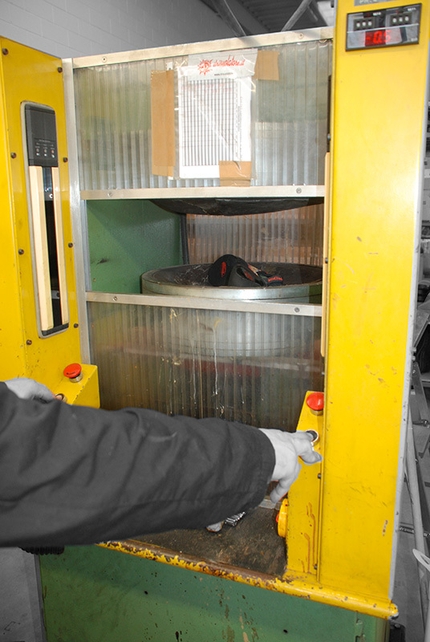


 See all photos
See all photos

